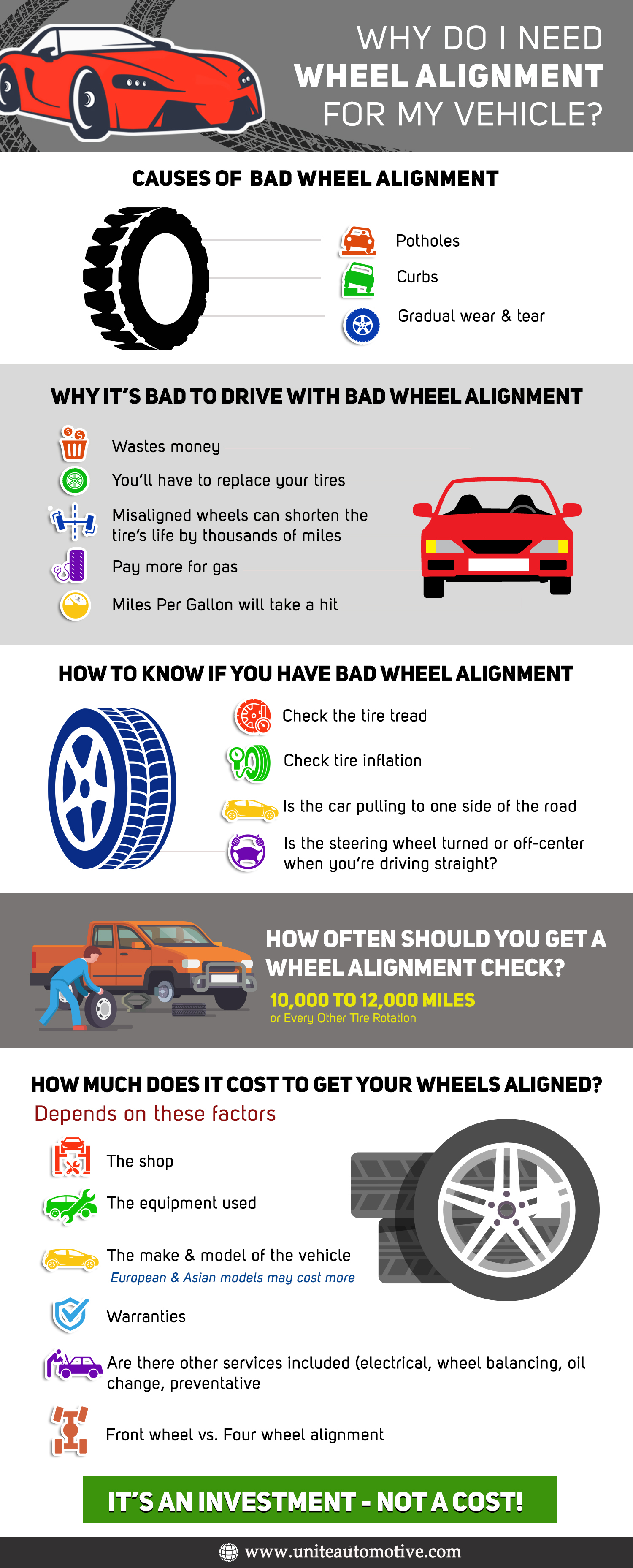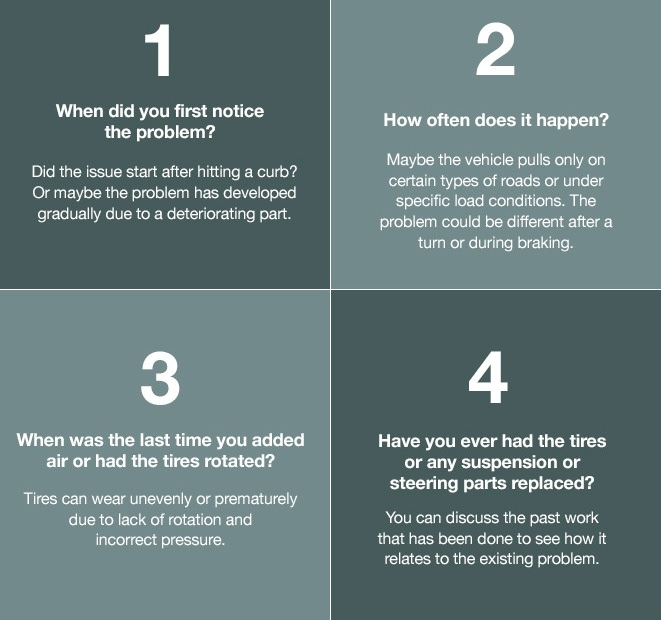To know if your car needs alignment, look for signs such as uneven tire wear, vehicle pulling to one side, steering wheel vibration, or off-center steering wheel position. Introduction (120 words): Aligning your car’s wheels is crucial for maintaining proper steering and suspension angles, ensuring optimal tire performance, and extending the lifespan of your tires.
Over time, various factors like hitting potholes, curbs, or other road hazards can disrupt the alignment of your car’s wheels. Not only does misalignment affect your car’s handling and safety, but it can also lead to uneven tire wear, reduced fuel efficiency, and the need for premature tire replacement.
So, it’s essential to recognize the signs that indicate your car may need an alignment. We will explore the common indicators such as uneven tire wear, vehicle pulling to one side, steering wheel vibration, or an off-center steering wheel position that can help determine if your car requires alignment. By spotting these signs early on, you can address alignment issues promptly, ensuring a smoother, safer, and more cost-effective driving experience.
Common Signs Of Misaligned Car
It’s essential to ensure that your car is properly aligned for optimal performance and safety. A misaligned car can lead to various problems, including uneven tire wear and reduced handling. If you’re unsure whether your car needs an alignment, watch out for these common signs:
Steering Wheel Off-center
If you notice that your steering wheel is not centered and tends to veer to one side even when driving straight, it’s a clear indication that your car is misaligned. This means that the tires are not pointing in the right direction, resulting in an imprecise and uneven steering experience. It’s important not to ignore this issue as it can affect your ability to maintain control of the vehicle, especially in emergency situations.
Uneven Or Rapid Tire Wear
Another sign of a misaligned car is uneven or rapid tire wear. Take a closer look at your tires and check if the tread has worn down unevenly. Misalignment can cause certain parts of the tire to wear more quickly than others, leading to premature tire replacement. If you notice bald spots or excessive wear on specific areas of the tires, it’s a good indication that an alignment is needed.
| Tire Wear Pattern | Possible Misalignment Issue |
|---|---|
| Excessive wear on the edges | Toe misalignment |
| Excessive wear in the center | Overinflation or underinflation |
| Feathering or scalloping | Camber misalignment |
Toe misalignment:
- Tire edges wear excessively
- Hot and harsh driving conditions can worsen the issue
- Can be caused by hitting curbs or potholes
Overinflation or underinflation:
- Wear in the center of the tire
- Proper tire pressure maintenance is crucial to prevent this
Camber misalignment:
- Tire wear with irregular patterns, feathering, or scalloping
- Often caused by worn-out suspension components
- Regular inspections can help detect and address this issue
By understanding these common signs of a misaligned car and regularly checking your vehicle for any such indications, you can ensure that your car remains aligned for a smooth and safe driving experience. Don’t hesitate to consult a professional if you notice any of these signs, as they will be able to assess the alignment of your car and make the necessary adjustments.

Credit: www.moogparts.com
Symptoms Of Poor Alignment
When it comes to driving, having proper wheel alignment is essential for optimal performance and safety. Poor alignment can occur over time due to various factors like hitting potholes or curbs, which can lead to a misalignment of the wheels. A car that is out of alignment may exhibit several symptoms, which can give you an indication that it’s time for an alignment. In this section, we will discuss the most common symptoms of poor alignment and how to identify them.
Vehicle Pulling To One Side
If you notice that your car drifts or pulls to one side while driving on a straight road, it could be a sign of poor alignment. Alignment issues can cause uneven tire wear, leading to a difference in the amount of grip each tire has on the road. This can result in your vehicle pulling to the side with less traction. To check for pulling, find a flat, straight road with minimal traffic and release your hands from the steering wheel momentarily. If your car veers to the left or right, it’s time to get your alignment checked.
Vibrations Or Shaking While Driving
Another indicator of poor alignment is experiencing vibrations or shaking while driving. Misaligned wheels can cause an imbalance in the tires, leading to vibrations that can be felt through the steering wheel or even the entire vehicle. If you notice shaking at higher speeds or when braking, it’s likely due to alignment issues. A smooth and seamless driving experience should not involve any vibrations, so addressing alignment problems could resolve this discomfort.
Uneven Tire Wear
Alignment problems can manifest in uneven tire wear. When your wheels are not properly aligned, it can result in uneven contact with the road surface. This uneven contact can cause excessive wear on certain areas of the tire, leading to bald patches or tread wear on one side of the tire. Regularly inspecting your tires for any signs of uneven wear can help you identify alignment issues before they escalate.
Steering Wheel Off-center
If your vehicle’s steering wheel is not aligned or centered when driving straight, it may indicate a need for alignment. While driving, glance at your steering wheel and observe its position in relation to your car’s emblem or other fixed reference points. Ideally, the steering wheel should be centered, with equal spacing on both sides.
Being aware of these symptoms can help you identify if your car needs an alignment. Paying attention to these indicators not only ensures a smoother driving experience but also helps prolong the life of your tires and improves overall safety on the road.
Impact Of Misalignment On Driving
Decreased Fuel Efficiency
Misaligned wheels can have a significant impact on your vehicle’s fuel efficiency. When your car is out of alignment, it causes the tires to work harder and creates undue friction, which directly affects fuel consumption.
The increased rolling resistance due to misalignment puts extra stress on the engine, leading to higher fuel usage. Addressing alignment issues can help restore normal tire movement, improve fuel efficiency, and save you money at the pump.
Uneven Tire Performance
One of the most noticeable effects of misalignment is uneven tire wear. When your car’s wheels are not properly aligned, the tires will wear down at different rates, leading to premature tread wear and potentially compromising your safety. This can also affect your vehicle’s handling and overall performance.
Regular wheel alignment services can help ensure that your tires wear evenly and last longer, ultimately enhancing your driving experience and maintaining the longevity of your tires. By addressing alignment issues promptly, you can prevent unnecessary tire replacements.
Methods To Check Alignment
Keeping your car’s alignment in check is crucial for ensuring optimal performance and safety. There are several methods to determine if your car needs alignment, ranging from simple visual inspections to professional wheel alignment services.
Visual Inspection
Start by visually inspecting your car for signs of misalignment. Look for uneven tire wear, crooked steering wheel, or vehicle pulling to one side while driving.
Professional Wheel Alignment Service
If you suspect alignment issues, it’s best to seek a professional wheel alignment service. Trained technicians use specialized equipment to measure and adjust your car’s alignment for precision.
Preventive Measures For Alignment Issues
To identify if your car needs alignment, observe for uneven tire wear, drifting or pulling to one side, and steering wheel vibration. Regularly checking and maintaining proper tire pressure, inspecting suspension components, and getting alignments done as recommended can prevent alignment issues and ensure smooth driving experience.
Regular Tire Rotation
Regular tire rotation helps distribute wear evenly, promoting longer-lasting alignment.
Avoiding Potholes And Curbs
Avoid potholes and curbs to prevent sudden jolts that can misalign your car.

Credit: www.uniteautomotive.com
:max_bytes(150000):strip_icc()/how-much-will-a-car-alignment-cost-4176341_V3-3fc071bd9dfd49e1b00d983b0d4e1b11.jpg)
Credit: www.thebalancemoney.com
Frequently Asked Questions For How To Know If Car Needs Alignment
How Do I Know If I Need An Alignment?
Alignment is needed when your vehicle shows signs of uneven tire wear, pulling to one side while driving, or a steering wheel that is off-center. Other indicators include vibration or noise while driving, or if you have recently hit a curb or pothole.
A professional alignment can correct these issues and improve your vehicle’s handling and tire longevity.
What Does An Out Of Alignment Car Feel Like?
An out of alignment car may feel unstable, veer to one side, or have a steering wheel that vibrates. It can also cause uneven tire wear and a shorter tire lifespan.
How Do I Check My Car Alignment?
To check your car alignment, drive on a flat, straight road and release the steering wheel. If the car drifts to one side, it may need alignment. Also, inspect the tires for uneven tread wear. Consider a professional inspection if you suspect alignment issues.
How Often Does A Car Need Alignment?
A car needs alignment every 6,000 to 10,000 miles or if you notice steering issues, uneven tire wear, or drifting.
Conclusion
Keeping an eye out for signs such as uneven tire wear and steering wheel vibration can help you determine if your car needs an alignment. Regular maintenance and being proactive can save you time and money in the long run.
Remember, it’s essential to address any alignment issues promptly to ensure a smooth and safe driving experience.
